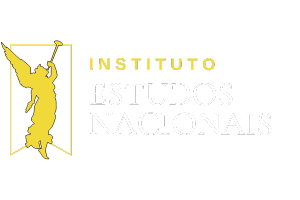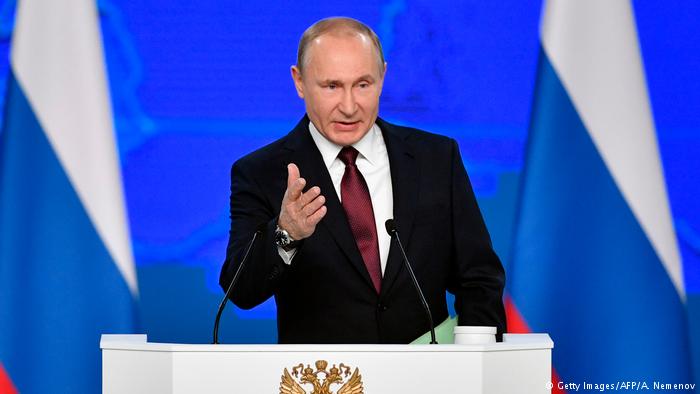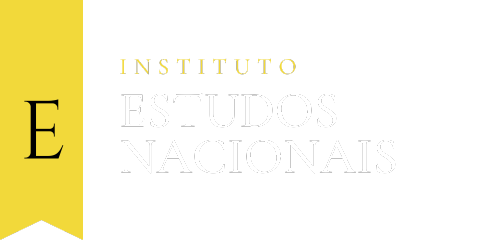“Nothing is in politics without first being in literature,” summarizes the prophetic phrase about the ideas of its author. It’s from Hugo Hoffmansthal, who was part of the Conservative Revolution movement in Germany, one of the first anti-liberal movements that foreshadowed German fascism. These ideas, later embodied by names like Julius Evola, influenced fascist ideologues. Today, these ideas return with full force, driven by Russian propaganda.
The symbol tattooed on the chest of the character present in the Capitol invasion is found, as shown in the image below, on the cover of the book A Handbook for Right-Wing Youth, by Julius Evola. But it’s the Valknut, a sacred symbol of pagan origins that is currently being used by Asatruar and Vanatruar pagan denominations, supremacist and neo-Nazi groups. How to explain these associations?
Russian propaganda
The Soviet experience of decades of disinformation for geopolitical purposes made Russia a true specialist power in the art of deception. With the target permanently centered on Western society, its knowledge about the enemy became unparalleled. In the contemporary context, since the early decades of the 21st century, Russia has been driving an anti-Western agenda that deeply penetrates hearts. Whether through official politics, literature, culture, entertainment, or alternative journalism, its means lead to the same goals, although in some cases they may seem opposite.
The new bipolarity disguised as multipolarity is defined in the false dialectic of the Great Awakening against the Great Reset, a reissue of the East-West goal. This narrative has inevitably led many Christian conservatives to embrace the awakening of the new redpill, whose gnostic and occult nature hides behind apparent opposition to globalist agendas and the defense of family or traditions. It will not be surprising, therefore, if the inattentive reader accuses me of being a globalist because of this warning. But that will only confirm the depth of the kidnapping that has occurred in the masses of Christians’ imagination.
The co-option of conservatives and anti-globalist right-wing movements to Russia has been carried out through a series of steps, more or less intentional, blending prepared opportunism with intense and scheduled ideological activity.
1. The great bait of QAnon
In 2017, a year after Trump’s election, messages began to spread about a conspiracy theory in which Trump would be a kind of savior of the West. The thesis mixed true information, even admitted by the globalist elite, with sensationalist and conspiratorial language, full of seemingly deliberate exaggerations to capture the attention of youth and conservatives worldwide. The theses began to be published by South African software developer Paul Furber, and some researchers suggest he was the creator of the theories. They effectively started from a forum on the 4Chan platform during the investigations into the alleged Russian influence in the 2016 American elections, which elected Trump. In those early messages, a pseudonym called only “Q” claimed to be infiltrated in the American government and “revealed” allegedly secret information. The first message only said: “many in our government worship Satan”. The following ones included excerpts from biblical verses. Without providing any proof of what it said or extra information, the messages followed in a continuous flow, creating an atmosphere of mystery and recruiting followers.
2. Tension rises
The 2020 pandemic further fueled the theories, which focused on Trump as a savior and supposed liberator of the world from a satanic elite that kidnapped and sacrificed children in alleged pedophilia networks. The so-called “Storm Operation” gradually led many to interpret the facts during the pandemic, which were confirming and justifying until the culmination of the US elections and the Capitol invasion, an event promoted by QAnon followers. Some even claimed that pandemic deaths were actually an excuse to hide the disappearance of people as a result of the operation to imprison those involved.
One of the topics of the theories concerns the alleged practice of draining the blood of human fetuses to manufacture a drug that would perpetuate the life and vitality of the financial, artistic, and political elite. The substance produced, called Adrenochrome, would be the main reason behind child trafficking and pedophilia, as the drug can only be produced when the baby or fetus dies in a situation of great stress or tension. The circulation of these theories obviously has a secondary effect beyond mere conspiracy and leading to specific political conclusions: they produce an evident desensitization that gradually increases resistance to extreme content.
The set of theses had a peculiar style and language, reinforcing expectations of a great event or global “awakening”. Something similar reappeared in Brazil shortly after the presidential elections that led to Bolsonaro’s defeat, either in the movement called Brazil Was Stolen, which indirectly collaborated with the January 8 uprising in Brasília. These events provided the world media with the interpretation that the events were similar and linked. The connection indeed appears mainly in the language and psychological effects that unite them. If there was an interest on the part of the press and the globalist elite in interpreting the same events as part of a “conspiracy” of the far right through “conspiracy theories”, the fact is that the same episodes led to an increase in this supposed “awakening”.
3. Without Trump, Putin steps in
Many were perplexed by the sudden shift of focus from the pandemic to Ukraine in early 2022. The fact is that even after the defeat of Trump and Bolsonaro, an orphaned conservatism had to deal with the sudden change of focus of global media, which interrupted coverage of the pandemic to focus on the conflict newly initiated by Russia against Ukraine. Why was the focus changed so quickly? The answer may lie in the easy adaptation and accommodation of the imagination that served to explain the previous situation, the good old journalistic criterion of narrative consonance. Not surprisingly, QAnon messages did not stop and adapted Trump’s messianism into undisguised Putinism: while some awaited a “second coming” of Trump and Bolsonaro, a false story was disseminated: according to the messages, Russia had destroyed American (globalist) laboratories in Ukraine, which was behind the Western campaign against Putin, who had thwarted pandemic plans. Despite being officially denied by the Kremlin, various Russian and Chinese websites spread the theory in a way that, even after the denial, it had already entered the imagination of conservatives who had dedicated all their efforts of the last two years against globalist and transhumanist pandemic narratives. In this new stage of disinformation in which we live, official statements have exactly the opposite effect of what they say.
4. The great redpill
Suddenly, a solution and an awakening were coming. But all those who had realized that the pandemic (the “fraudemic”) was a “psychological operation” of lies and knew all its subtleties, suddenly had not realized that they were falling precisely into the next stage of the same campaign—or at least into the opportunistic exploitation of its effects.
All these ideas support a sense of omnipresent and omnipotent conspiracy, against which, however, there was hope, centered on Trump, Bolsonaro, and, after their defeat, inevitably leading to Putin.
5. Background and the new “great awakening” product line
For several years, increasingly popular influencers in conservative circles, known to be suspected of Russian collaboration, such as Daniel Estulin and Alex Jones, began to write against globalist plans of the “great reset” in the form of an opposing proposal: the “great awakening”.
Under this title of Awakening, filmmaker Mikki Willis, who has directed productions to break the taboo on the use of psychotropic drugs, released in 2020 the film Plandemic and, in 2023, The Great Awakening. The latter, widely disseminated by anti-pandemic and anti-globalist activists, proposes a resistance to the globalist thesis of the Great Reset, proposed by names like Klaus Schwab and Bill Gates at the World Economic Forum. The film, which was censored by all mainstream media and big tech, was widely publicized in conservative circles precisely because of the censorship (a quite predictable consequence that, however, still deceives conservatives).
The opening scene of the film is symbolic. In it, Mikki himself appears, in a speech to a crowd carrying American flags and libertarian signs. On the microphone, he says to the people:
“Whatever political party you identify with, you are welcome here. Whatever your color, culture, or creed you identify with, you are welcome here. Whether you are vaccinated or unvaccinated, you are welcome here. Now look around at these faces in the crowd. Look around you. It’s America, beautiful America. And it’s worth fighting for. It’s worth fighting for you. It’s worth fighting for your children. It’s worth fighting for our freedom”.
While Mikki talks about the faces, the image shows a sequence of faces representing a very common value for globalists: diversity. However, his speech is in opposition to the globalist left elite and, at the same time, brings a not so new type of Americanism. Although it results in a product consumed especially by conservatives, the result of his documentary resembles a lot the left-wing advertisements of the early century, like the films of leftist Michael Moore, who denounced the harmful actions of mega-corporations.
The focus of Mikki’s film is not only the sanitary tyranny initiated in 2020 but long before. The problem is not what he attacks, but what options are left politically in the face of what he does not say he defends. Although this may not be Mikki’s objective, just as other products disseminated by conservatives began to be instrumentalized by agents ready to sustain the fall of a mass of dissatisfied into their opportunistic hands.
On the internet, his biography is quite popular: “After searching for survivors under the rubble of the World Trade Center in 2001, Willis experienced an awakening that reshaped his life and profession. Since then, his productions have been used to correct divisive narratives about historical events and as key evidence in important international legal proceedings”. As always, the intention is worth little compared to the use that will be made by those who are better prepared and have more time.
The term “awakening” or, more precisely, “global awakening”, had already appeared in 2011, in Alex Jones’ video series, titled “The global awakening: hell is coming”. In it, the journalist focuses his attack on the Western elite of the New World Order. Jones allied with Trump in the elections and, after being pursued and censored by globalists, became a supporter of Putin’s Russia. In fact, for many years, the platform used by Alex Jones on the internet has belonged to the same network funded by Russian oligarchs like Konstantin Malofeev, Tsargrad TV, as revealed by the Relatório Estudos Nacionais (National Studies Report) in April 2023.
Mel Gibson
Mel Gibson’s film The Sound of Freedom was a huge success supported by the similarity to QAnon speeches. The film deals with a child trafficking network and focuses on Latin America. Although the film does not deal with Ukraine, the promotion of the film by policeman Tim Ballard, who inspired the story, was in analogies with Ukraine, which caused a clearly different effect seeking to transform the film into a piece of Russian propaganda.
In addition to this fact, the release came shortly after Russian President Vladimir Putin was accused by the International Court of kidnapping Ukrainian children. Gibson’s film ended up serving as ammunition for pro-Russia groups in the Kremlin’s central argument that the kidnapping of children by Russia was a protective measure against abuses.
As in the false case of the destruction of laboratories, this controversy was also undone by official statements, which evidently have no appeal in terms of internet narratives that grow and provoke adhesions in the growing anti-establishment public opinion. Jim Caviezel, the actor who played Jesus in Gibson’s film The Passion of the Christ, became a companion in the promotion of the new film and has been accused by part of the media of disseminating theses like that of adrenochrome.
Gibson or Caviezel’s relationship with Russian agendas is unproven and cannot be affirmed. Many people repeated clichés and disseminated theses that confirmed their beliefs during the pandemic. And this is precisely the functional nature of the new Russian disinformation.
Cristian Derosa
Journalist, master in Fundaments of Journalism (UFSC), writer, author of The Russia’s Black Sun: the occult roots of eurasianism, and of 5 books on social communication and journalism. Co-founder and editor of the Estudos Nacionais website since 2016.









